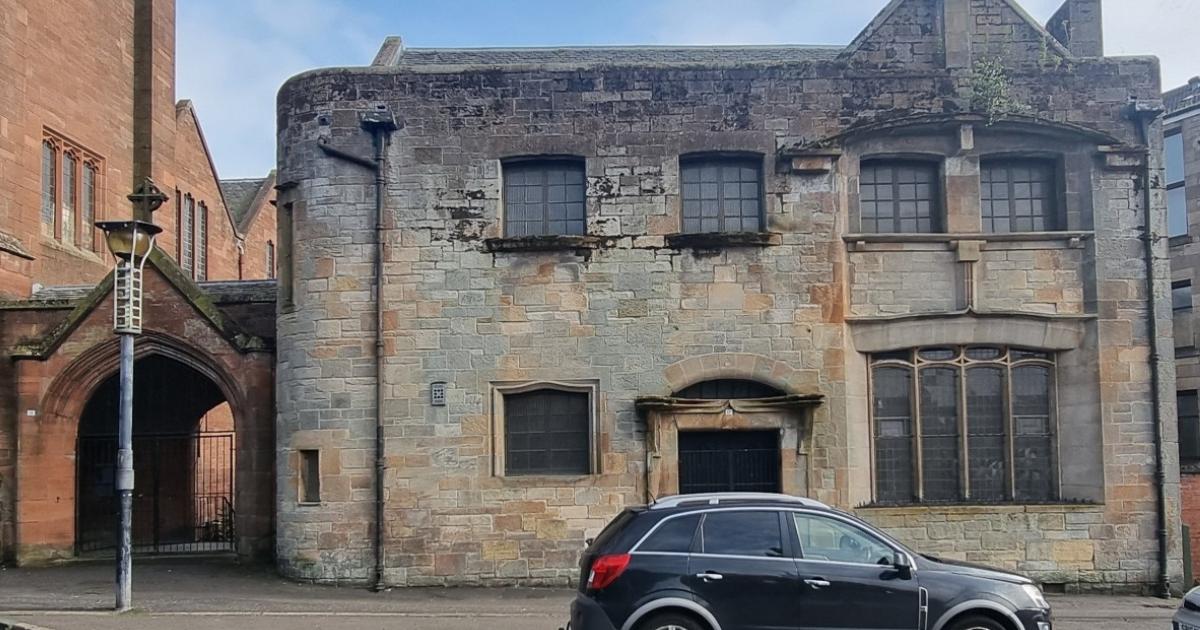The Mackintosh Halls, located on Shakespeare Street in Ruchill, will officially go on the market “towards the end of the year”, the Glasgow Times first reported. However, an exact date has not yet been confirmed.
The Mackintosh Halls, a category A-listed building, were purpose-built for church use in 1899 and are considered to be a stunning example of the renowned Glasgow designer’s work.
(Image: The Church of Scotland)
The Church of Scotland, which owns the buildings, has not revealed the price of the historic site, which was built more than 120 years ago in 1899.
The “unusual” sale comes following the union of the congregations of Ruchill Kelvinside with Maryhill in 2022.
Reverend Stuart Matthews, who is the minister at Maryhill Ruchill Church, explained that this had been a “difficult decision” but that the congregation believes it is in the best interests of the buildings.
Matthews said: “We have undertaken to look after The Mackintosh Halls for many years, but like all of the Church of Scotland, we have faced a challenging time post-Covid with a backdrop of ongoing church reform, declining congregations, and increasing financial constraints.
“The Mackintosh Halls are a real gem and we are hoping someone with better resources will recognise the building’s significance and undertake to preserve its future appropriately.
“Whilst we don’t have an exact timetable yet, we are expecting that the buildings will go on sale towards the end of the year.”
(Image: The Church of Scotland)
(Image: The Church of Scotland)
The buildings, which include a large meeting area and a janitor’s house, date from around the same time as the Glasgow School of Art, which Mackintosh also designed.
(Image: The Church of Scotland)
(Image: The Church of Scotland)
The site also features a church sanctuary, which was built at a later date and is not by Mackintosh.
This was instead designed by Neil Campbell Duff and is a category B-listed building.
(Image: The Church of Scotland)
Reverend David Gray, the property convenor of the Glasgow Presbytery, has an architectural background and highlighted the significance of the buildings.
He commented: “This is a rare surviving example of the early work of Charles Rennie Mackintosh, reflecting his distinctive architectural style as it evolved during a creative period leading to the design of the Glasgow School of Art.
“In this, the origins of later design ideas are evident, making The Mackintosh Halls an important microcosm of all that was achieved during his career, as well as an important asset to be maintained and curated in-future.”
(Image: The Church of Scotland)
(Image: The Church of Scotland)
The Mackintosh Halls feature a variety of the designer’s trademark styles, including stained glass windows and flower patterns on the doors.
Stuart Robertson, director of the Charles Rennie Mackintosh Society, reflected on how the halls were designed at the start of Mackintosh’s creative period.
(Image: The Church of Scotland)
He said: “The Ruchill Church Halls display Mackintosh’s trademark style and his art nouveau motifs are scattered throughout the building.
“With stained glass windows and flower patterns etched in the doors, the design resembles that of the Art School.
“Ruchill was designed at the start of Mackintosh’s extraordinary creative period from 1895-1906, which includes nearby Queen’s Cross Church (1897-9), The Glasgow School of Art (1897–9), the Arts and Crafts Exhibition in London and his first work for Miss Cranston.
“The buildings of Charles Rennie Mackintosh form a major component in the nation’s cultural heritage and are celebrated internationally.
“The Society plays a major role in promoting the Mackintosh legacy and acts as a guardian to safeguard and conserve the buildings for future generations.
“The legacy is small, vulnerable, and irreplaceable.”
